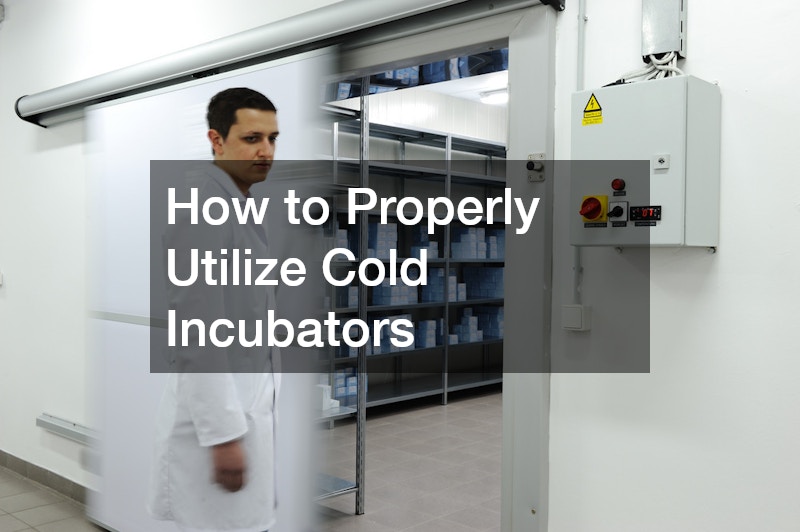Understanding the essentials of cold incubators is crucial for maximizing their efficacy in various applications. This article delves into the critical aspects of cold incubators, addressing common queries to help you utilize them effectively. Cold incubators provide a controlled environment where temperature-sensitive samples can be stored safely, thus preserving their integrity and usability.
Section 1: What are the Primary Uses of Cold Incubators?
Understanding Cold Incubator Applications
Cold incubators play a pivotal role in preserving sensitive samples. They are extensively used in fields such as microbiology, pharmaceuticals, and food testing, ensuring that samples are maintained at specific low temperatures to prevent spoilage or degradation. By maintaining precise and consistent low temperatures, cold incubators help prevent adverse chemical reactions that could compromise sample quality.
In microbiology, they provide an ideal environment for the cultivation of psychrophilic microorganisms. Pharmaceutical companies utilize cold incubators to store vaccines and biological samples, protecting them from fluctuations that might alter their composition. Furthermore, food testing laboratories rely on these incubators to ensure that perishable products can be analyzed under controlled conditions without the risk of bacterial growth.
A key application in research involves storing reagents and enzymes that are sensitive to higher temperatures. Besides preserving biological samples, cold incubators contribute significantly to maintaining the longevity and effectiveness of chemicals needed in experimental setups. Thus, these incubators are indispensable tools across various domains requiring stringent temperature control.
Benefits of Utilizing Cold Incubators
Utilizing cold incubators offers several advantages, including precise temperature control, enhanced sample stability, and a reduction in the risk of contamination. These benefits collectively contribute to more accurate experimental results. Cold incubators enable researchers and technicians to conduct experiments with higher confidence in their outcomes.
Precise temperature regulation prevents the degradation of volatile or heat-sensitive compounds, ensuring the integrity of samples. The controlled environment provided by cold incubators minimizes contamination risks, as it limits unwanted microbial growth. This high level of control supports reproducible and dependable research findings, integral to scientific advancements.
Common Industries Relying on Cold Incubators
Industries such as biochemical companies, medical laboratories, and research institutions heavily rely on cold incubators. The ability to maintain a controlled environment is crucial for conducting experiments and producing reliable data. Cold incubators support these industries in maintaining the quality and precision required for successful outcomes.
Biochemical companies, in particular, depend on cold incubators to store enzymes, antibodies, and reagents, ensuring they remain active for experimental use. Medical laboratories utilize these incubators to preserve samples and cultures that are critical for disease diagnosis and treatment research. Research institutions, on the other hand, use these tools to facilitate extensive studies that often require stringent environmental conditions.
Section 2: How to Maintain Optimal Performance of Cold Incubators?
Regular Maintenance and Calibration
To ensure the longevity and performance of cold incubators, regular maintenance is essential. Routine checks and calibrations help in maintaining precise temperature settings and identifying potential mechanical issues early on. Consistent maintenance schedules enable institutions to circumvent costly repairs and maintain operational efficiency.
Temperature sensors and control systems in cold incubators require periodic inspections to ensure they function within specified parameters. Systematic calibration checks minimize the risk of equipment failures that could jeopardize sample integrity. Moreover, timely adjustments prevent discrepancies in temperature readings, preserving the accuracy of experimental data.
Maintenance practices should be aligned with the manufacturer’s guidelines to retain warranty benefits and optimal performance. Equipment downtime is minimized when issues are detected and resolved promptly, which is essential for maintaining continuous laboratory operations. Thus, regular maintenance fortifies the reliability and effectiveness of cold incubators over time.
Optimal Placement and Storage Practices
Proper placement of the incubator away from direct sunlight and heat sources is necessary to maintain its efficiency. Additionally, organizing the storage of samples within the incubator prevents temperature fluctuation and overcrowding. Strategic placement helps keep operating conditions stable, which is essential for energy efficiency and consistent performance.
Arranging samples in a manner that allows for sufficient airflow between items is crucial to prevent localized hot or cold spots. Overcrowding can lead to uneven temperature distribution, thus compromising the incubator’s ability to preserve samples accurately. Therefore, following systematic storage protocols enhances the uniformity of temperature within the incubator.
Institutional standards for sample storage practices should be developed, including properly labeled containers and monitoring sample inventory regularly. Rearranging samples periodically helps identify expired materials that no longer require refrigeration. These methods collectively support the optimal function of cold incubators and the accuracy of stored samples.
By comprehensively understanding the uses and maintenance of cold incubators, users can significantly enhance the reliability and accuracy of their work. Leverage the knowledge shared in this article to make the most of your cold incubation processes. The thoughtful application of these insights contributes to both scientific innovation and operational excellence.
.



